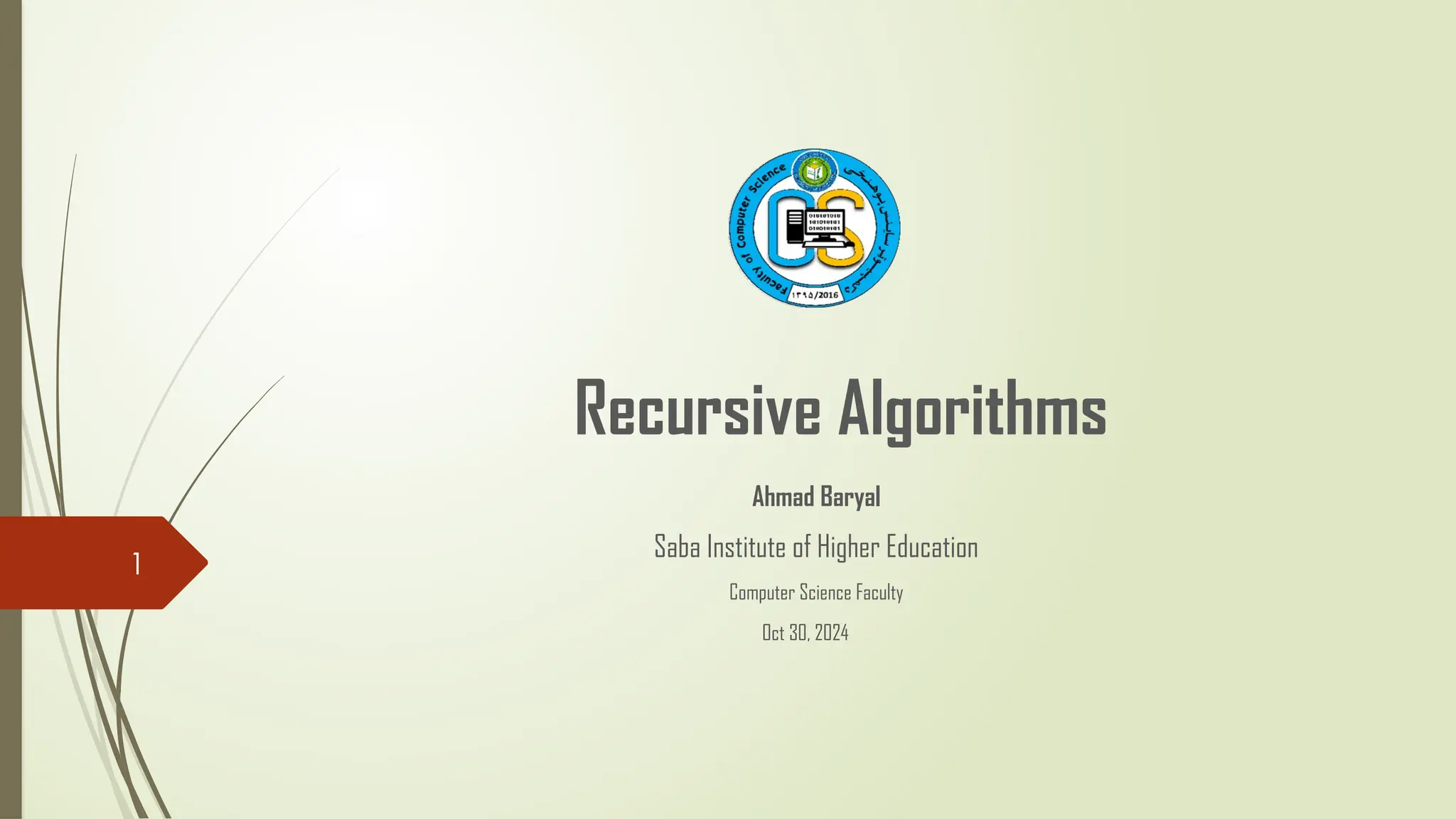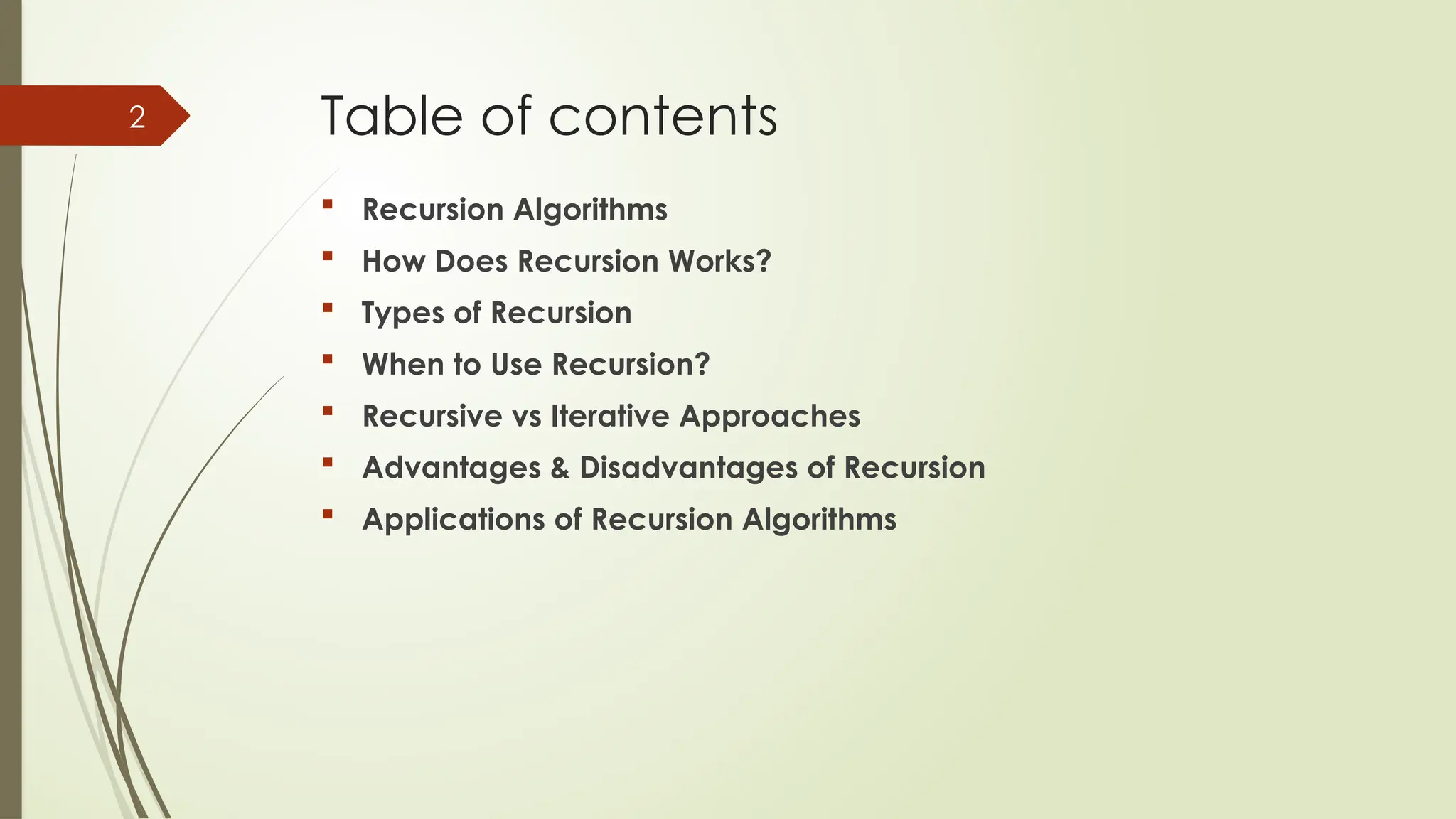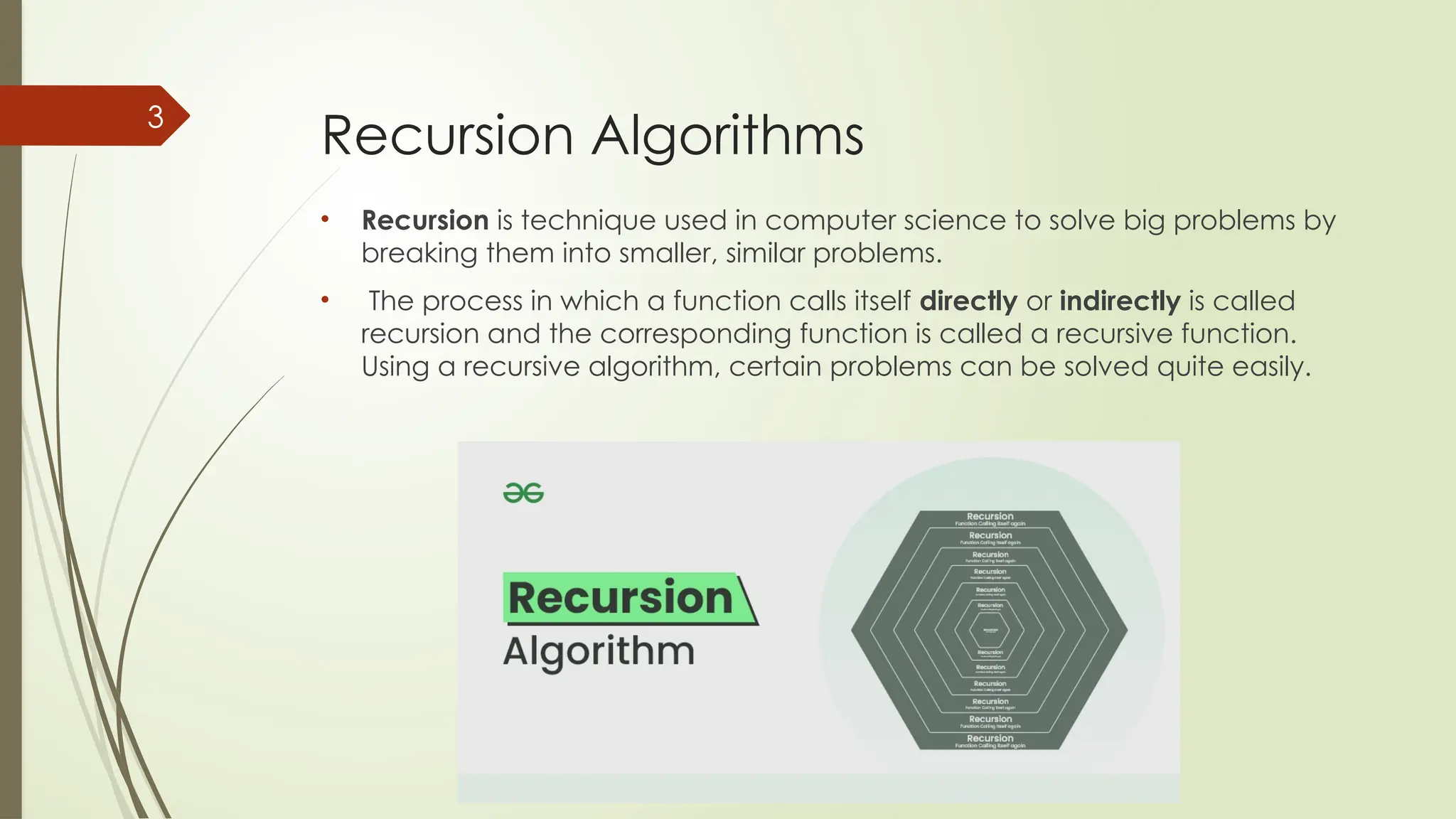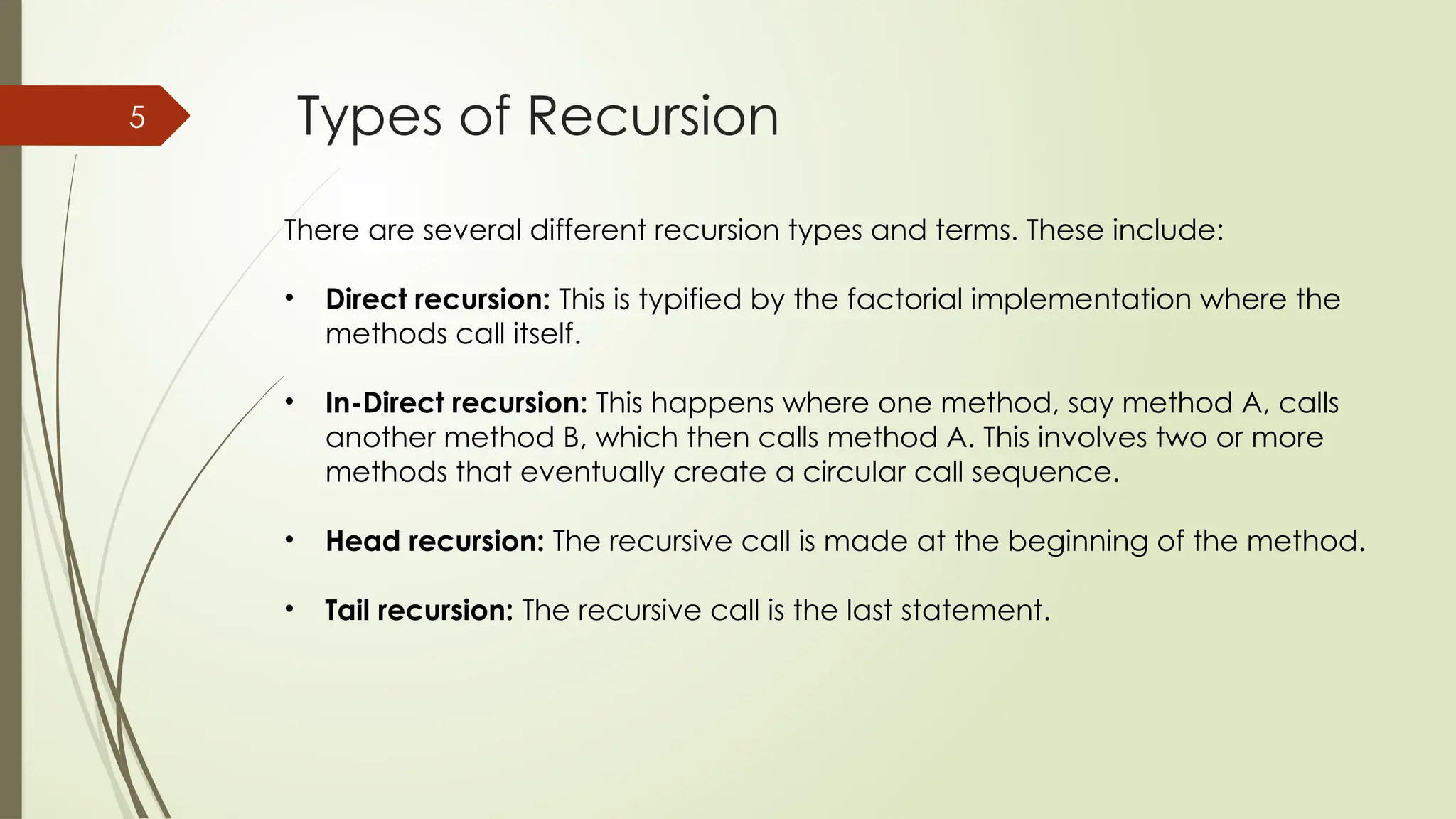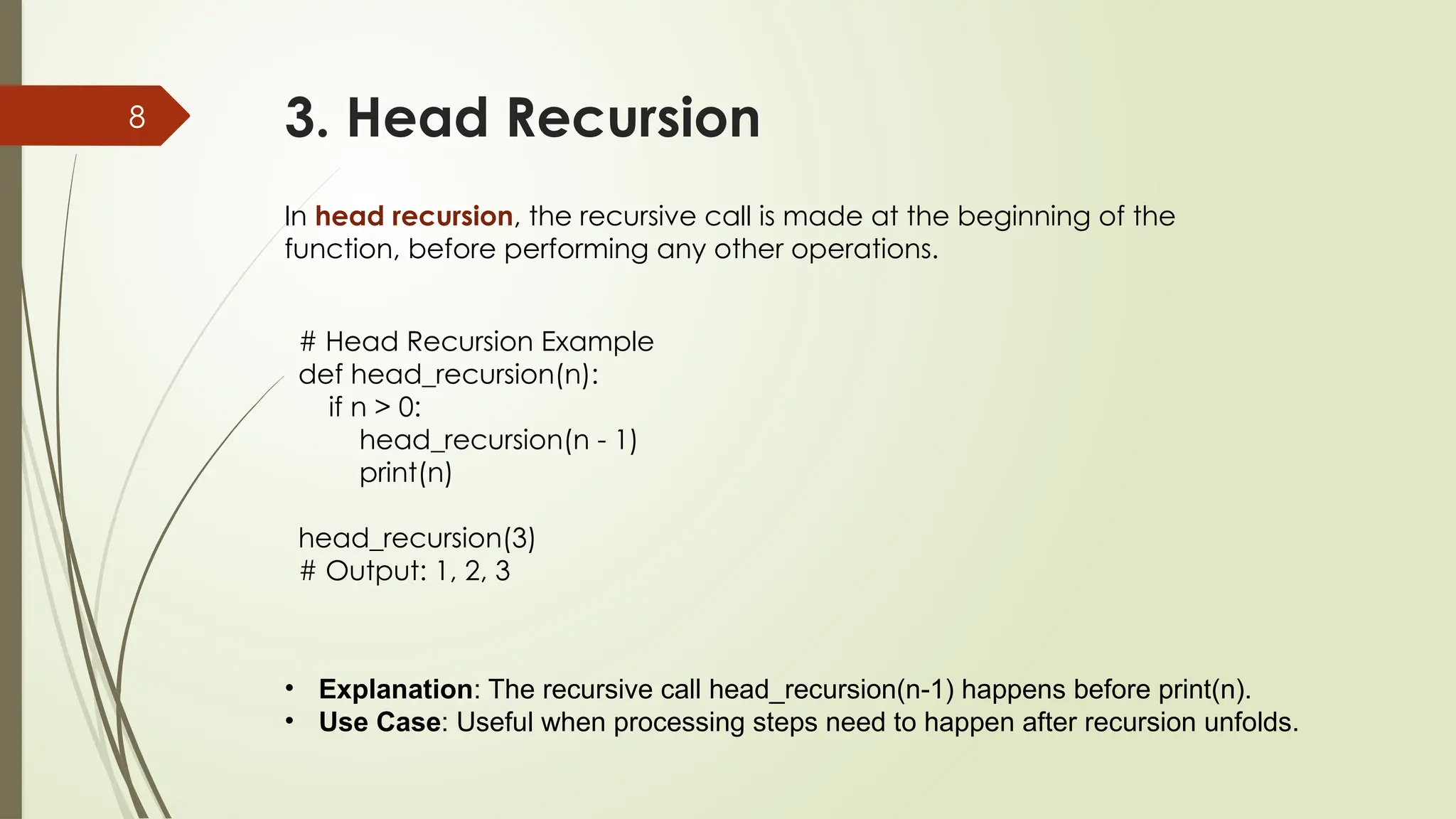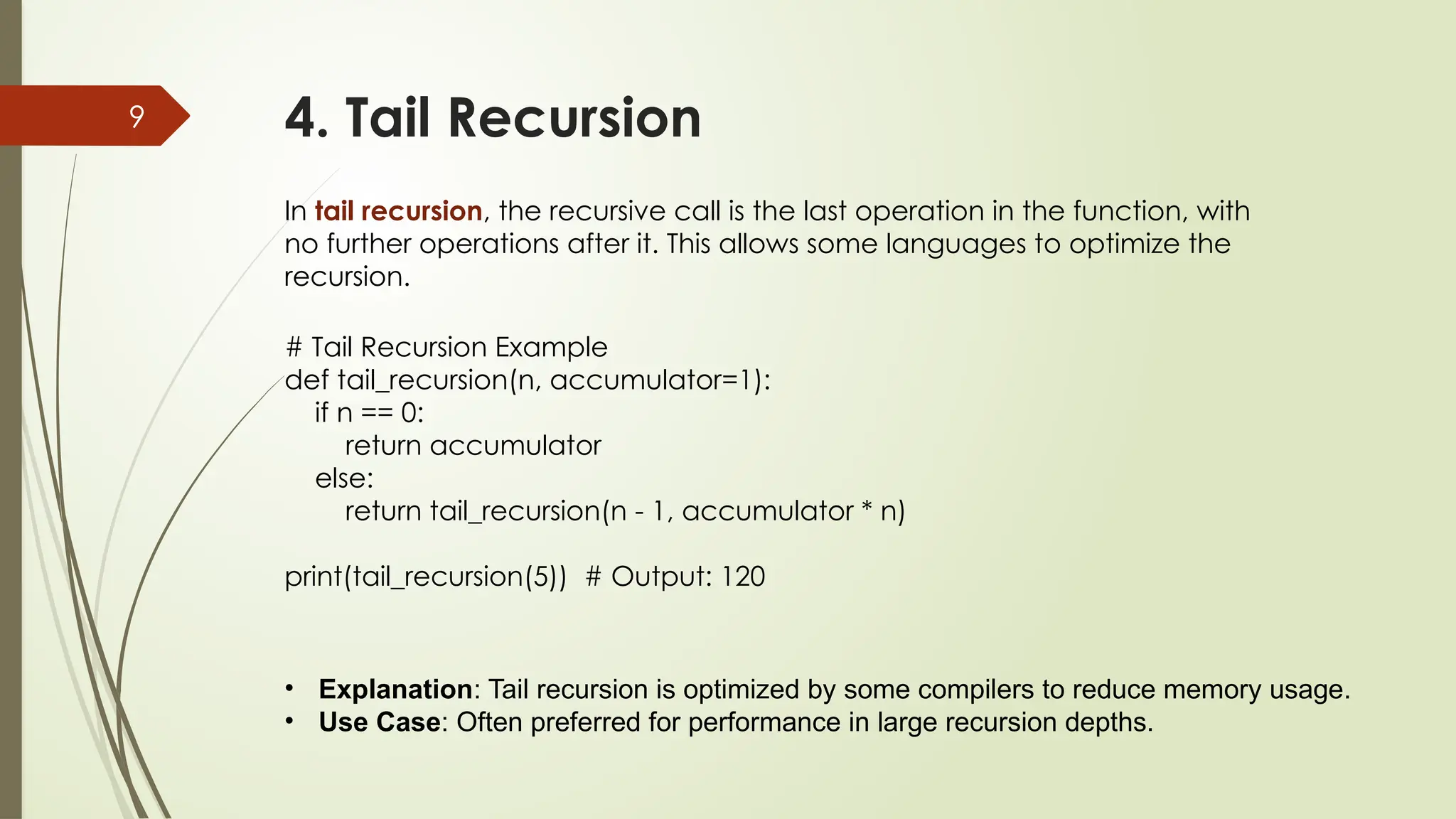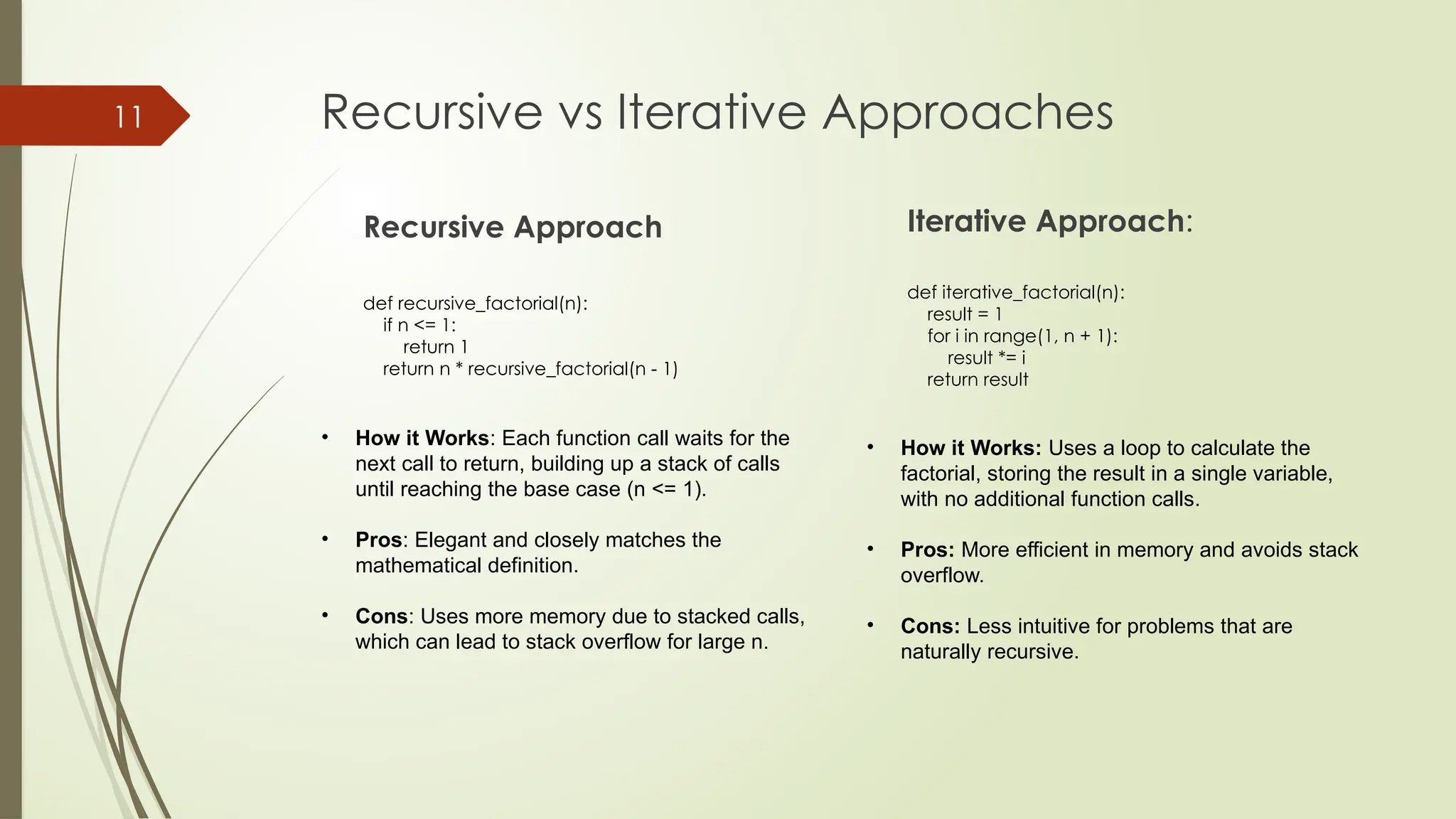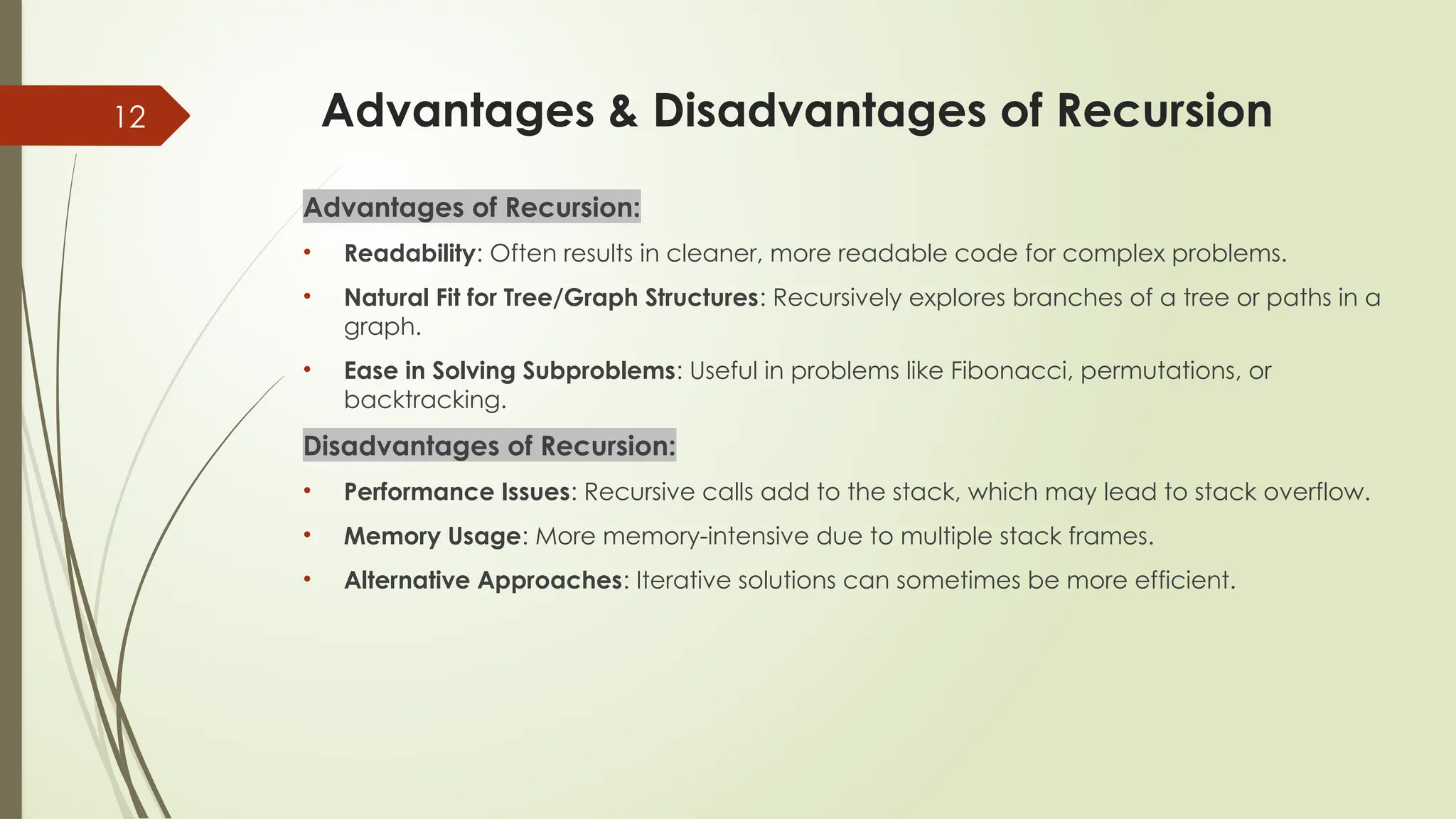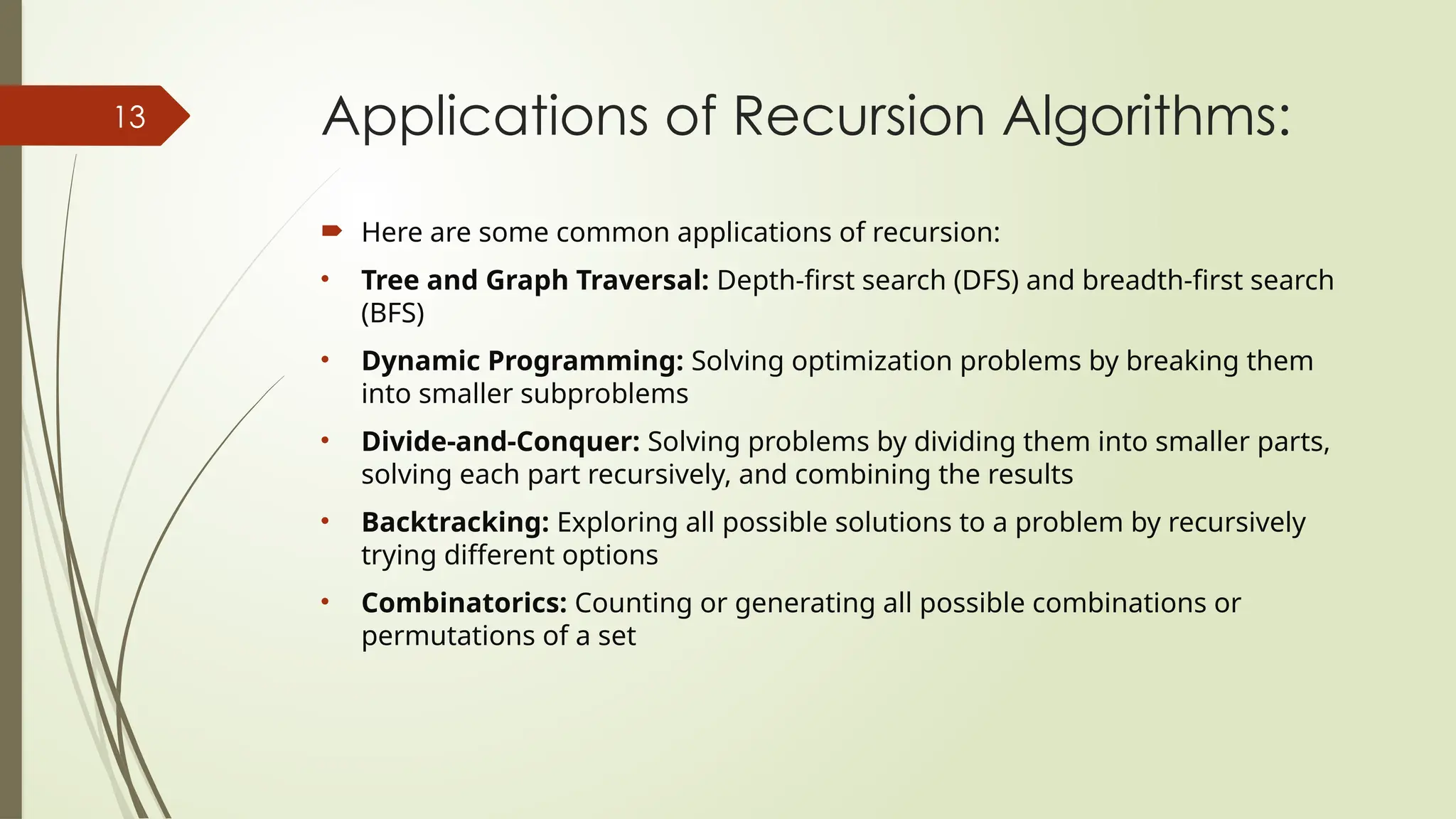The document provides a comprehensive overview of recursive algorithms, explaining their function, types (direct, indirect, head, and tail recursion), and appropriate use cases. It highlights the advantages and disadvantages of recursion compared to iterative approaches and describes common applications such as tree traversal and dynamic programming. The content aims to educate on the effective implementation and considerations of recursion in computer science.
